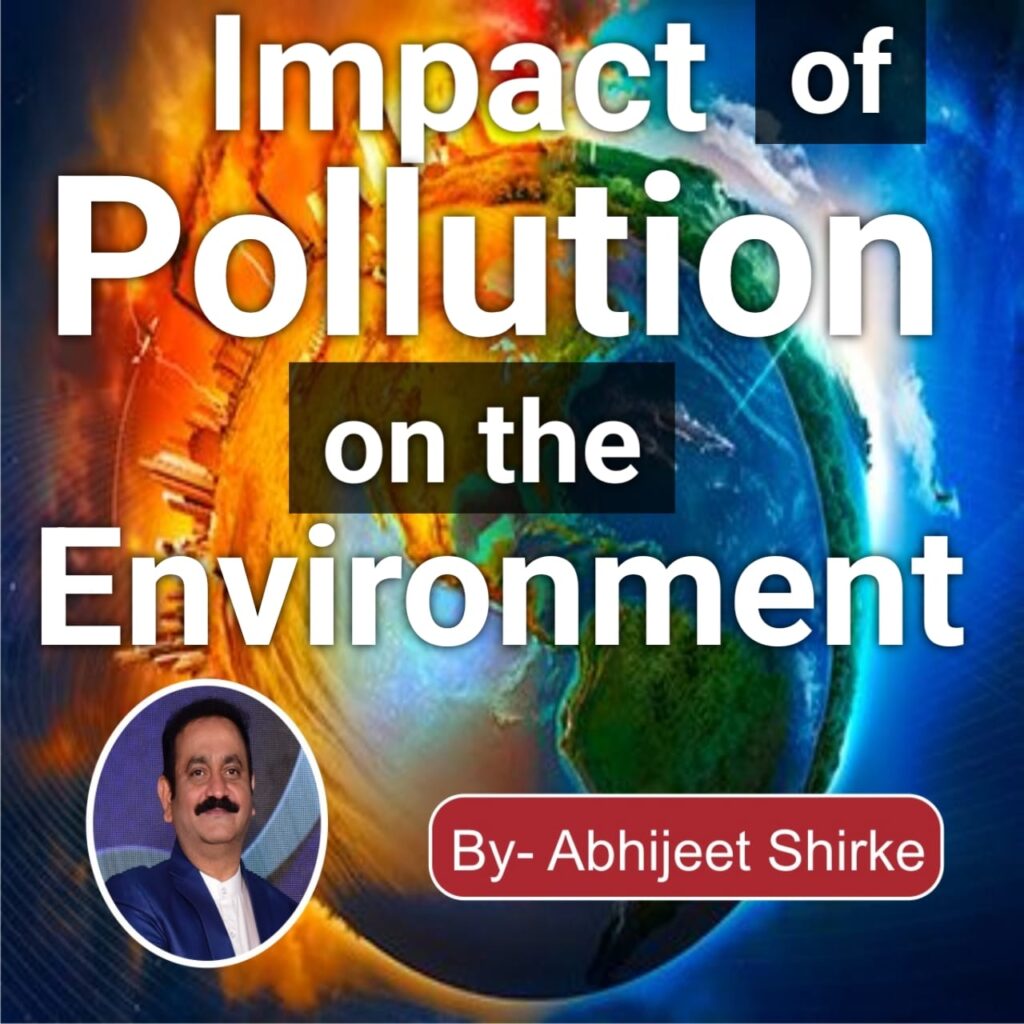
Pollution is a pervasive and multifaceted issue that poses a severe threat to the delicate balance of the Earth’s ecosystems. As human activities intensify, the release of pollutants into the environment has reached unprecedented levels, leading to detrimental consequences for both the environment and all forms of life. The Impact of Pollution on the Environment harms ecosystems, disrupts wildlife, and threatens global sustainability. This article aims to provide an in-depth overview of various types of pollution, their adverse effects on different aspects of the environment, and the imperative need for a united, global effort to mitigate and prevent further damage.
Types of Pollution
1. Air Pollution
Air pollution, primarily caused by the emission of pollutants from industrial processes, vehicles, and the burning of fossil fuels, leads to the deterioration of air quality. Harmful substances such as particulate matter, nitrogen oxides, and sulfur dioxide contribute to respiratory diseases and global warming.
2. Water Pollution
Contamination of water bodies by industrial effluents, agricultural runoff, and improper waste disposal results in water pollution. This impacts the availability of pure drinkable water, affecting aquatic ecosystems and endangering human health.
3. Soil Pollution
Soil pollution arises from the accumulation of hazardous chemicals, heavy metals, and agricultural pesticides in the soil. This not only degrades soil fertility but also poses a significant threat to the food chain as crops absorb these contaminants.
4. Noise Pollution
Excessive noise from urbanization, industrial activities, and transportation can disrupt ecosystems, leading to stress and health issues for both humans and wildlife.
Adverse Effects on the Environment
1. Pure Drinkable Water
Water pollution jeopardizes the availability of clean and safe drinking water, affecting human health and contributing to waterborne diseases.
2. Agriculture
Soil pollution hampers agricultural productivity, impacting crop yields and the nutritional quality of food. Pesticides and fertilizers contaminate water sources, leading to further ecological imbalances.
3. Food
Contaminated water and soil directly affect the quality and safety of the food supply, endangering human health through the consumption of polluted crops and animal products.
4. Health
Air pollution contributes to respiratory diseases, cardiovascular issues, and other health complications. Pollution-related illnesses pose a significant burden on public health systems worldwide.
5. Climate Change
Greenhouse gas emissions from various sources contribute to climate change, leading to rising temperatures, extreme weather events, and disruptions in ecosystems.
6. Photosynthesis
Air pollution, particularly elevated levels of ozone, negatively impacts photosynthesis in plants, affecting their growth and ability to sequester carbon dioxide.
7. Marine Ecosystem
Water pollution harms marine life, causing habitat destruction, biodiversity loss, and disruptions in the delicate balance of aquatic ecosystems.
8. Drought
Pollution exacerbates climate change by changing precipitation patterns, which increases the frequency and intensity of droughts in different parts of the world.
9. Global Warming
The accumulation of greenhouse gases in the atmosphere, primarily carbon dioxide, methane, and nitrous oxide, intensifies the greenhouse effect, leading to global warming and associated climate impacts.
Pollution Control Measures
1. Regulatory Policies
Implementation and enforcement of stringent environmental regulations in industries to control emissions and waste disposal.
2. Technological Innovations
Development and adoption of cleaner technologies, renewable energy sources, and sustainable agricultural practices to minimize pollution.
3. Public Awareness and Education
Raising awareness about the detrimental effects of pollution through educational programs and campaigns to promote responsible and sustainable behavior.
4. Waste Management
Proper waste disposal methods and recycling initiatives are needed to reduce the accumulation of pollutants in landfills and water bodies.
5. Afforestation and Reforestation
Planting and restoring forests will enhance carbon sequestration, reduce air pollution, and mitigate the impacts of climate change.
6. International Cooperation
Collaboration between nations to address transboundary pollution issues and work towards global solutions.
Humanitarian Projects under the World Government
1. Clean Water Initiatives
Implementing projects to provide access to clean and safe drinking water in regions affected by water pollution ensures the well-being of communities.
2. Healthcare Support
Establishing healthcare programs to address pollution-related health issues, with a focus on vulnerable populations.
3. Climate Adaptation Projects
Supporting communities in adapting to the impacts of climate change, such as rising sea levels and extreme weather events.
4. Sustainable Agriculture Programs
Promoting and implementing sustainable agricultural practices to ensure food security and mitigate soil pollution.
5. Renewable Energy Initiatives
Investing in and supporting projects that promote the transition to renewable energy sources, reducing dependence on fossil fuels.
One World, One Family, One Project
In the spirit of unity and collective responsibility, the “One World-One Family-One Project” initiative under the “Save Earth, Save Life Mission” aims to rally nations, communities, and individuals towards a common goal of environmental preservation. By fostering a sense of interconnectedness, this initiative encourages collaboration on a global scale, emphasizing the shared responsibility of safeguarding the planet for current and future generations.
The detrimental effects of pollution on the environment are far-reaching, affecting essential elements of life such as water, agriculture, food, health, and climate. To address this global crisis, concerted efforts are required, including stringent regulations, technological advancements, public awareness, and international cooperation. The proposed “One World-One Family-One Project” initiative serves as a call to action, emphasizing the interconnections of all life on Earth and the shared responsibility to protect our planet. It is only through a united, global effort that we can hope to mitigate the impact of pollution and pave the way for a sustainable and harmonious future.